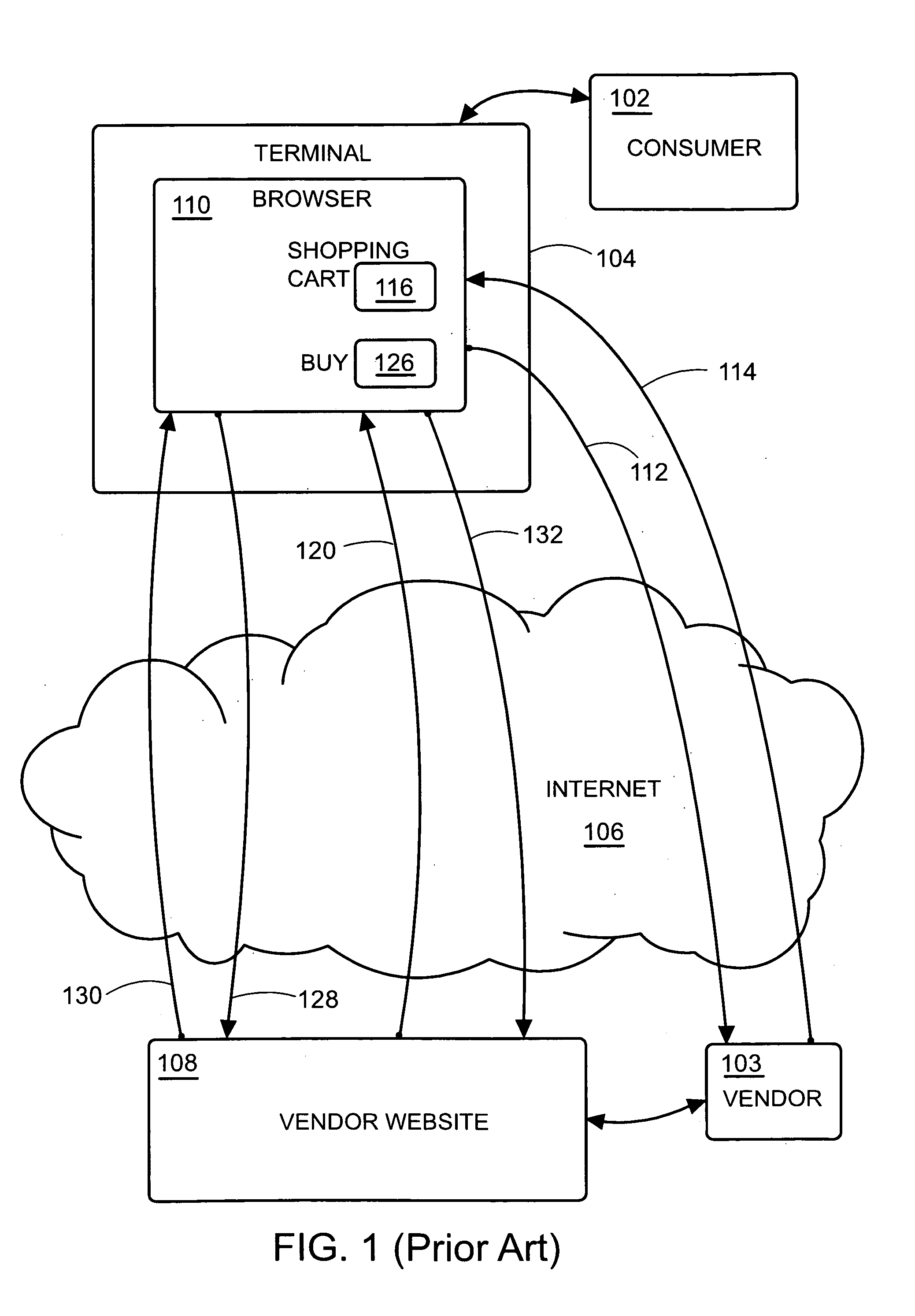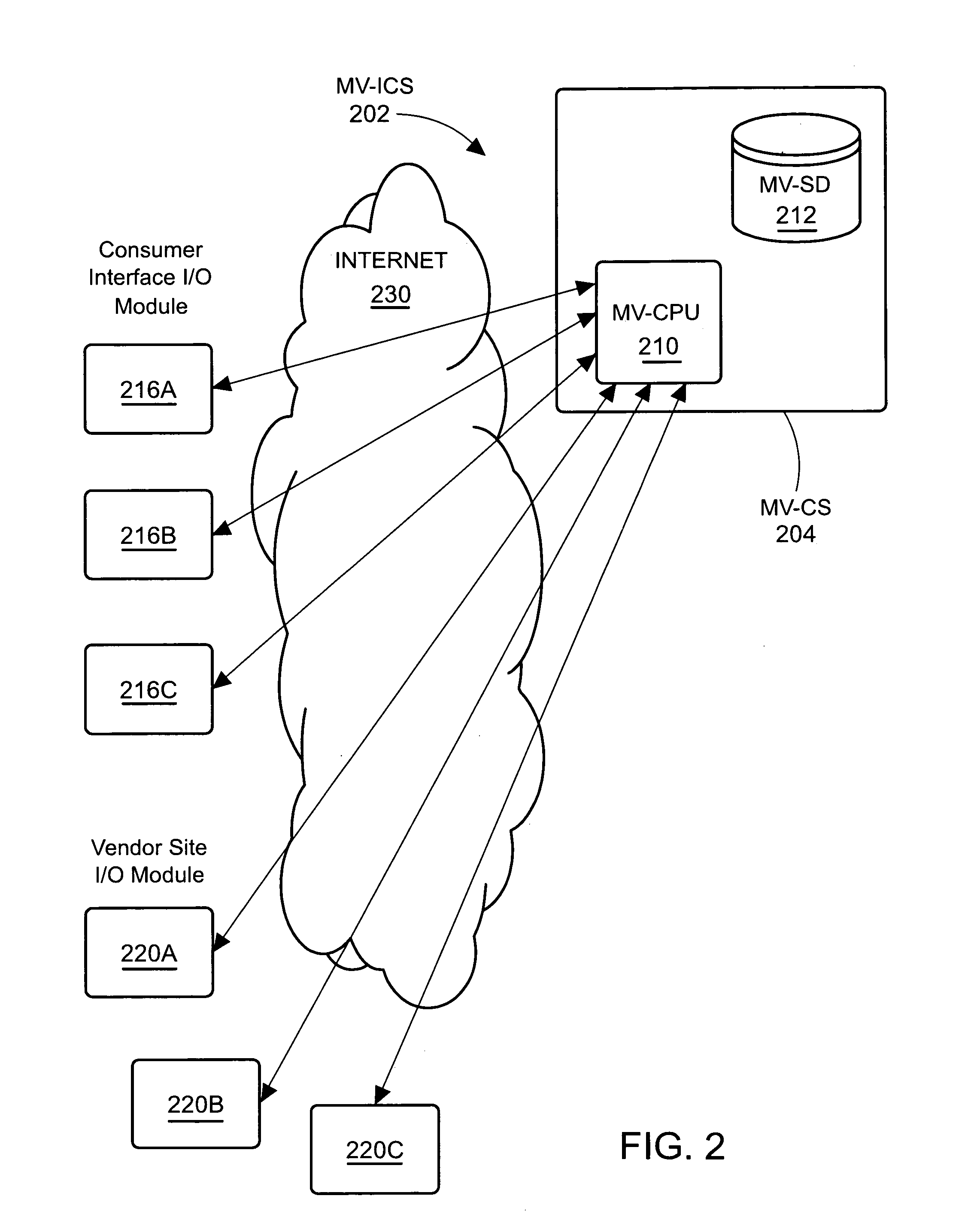Multi-vendor internet commerce system for e-commerce applications and methods therefor
a multi-vendor internet commerce and application technology, applied in the field of multi-vendor internet commerce system for e-commerce applications, can solve the problems of inconvenience for consumers, increased security risk, and confidential personal, payment and shipping data pertaining to consumers being kept at the vendor
- Summary
- Abstract
- Description
- Claims
- Application Information
AI Technical Summary
Benefits of technology
Problems solved by technology
Method used
Image
Examples
Embodiment Construction
[0036]In accordance with one embodiment of the present invention, there is provided a multi-vendor Internet Commerce System which advantageously offers both consumer user-friendliness and ease of setup and maintenance for a plurality of e-commerce vendors. With respect to ease of set up and maintenance, there is provided, in accordance with one aspect of the present invention, a Multi-Vendor Internet Commerce System (MV-ICS) 202, which includes a centrally implemented Multi-Vendor Central Processing Unit (Multi-Vendor CPU) 210 acting cooperatively with a centrally implemented Multi-Vendor Shared Datastores (MV-SD) 212. Using a variety of vendor-site I / O modules 220 and consumer-interface I / O modules 216, the resources within the Multi-Vendor Shared Datastores (MV-SD) 212 may be shared by the plurality of vendor websites to relieve the individual vendor websites of the burden of setting up and maintaining some or all of the facilities of the Multi-Vendor Shared Datastores (MV-SD) 212...
PUM
 Login to View More
Login to View More Abstract
Description
Claims
Application Information
 Login to View More
Login to View More - R&D
- Intellectual Property
- Life Sciences
- Materials
- Tech Scout
- Unparalleled Data Quality
- Higher Quality Content
- 60% Fewer Hallucinations
Browse by: Latest US Patents, China's latest patents, Technical Efficacy Thesaurus, Application Domain, Technology Topic, Popular Technical Reports.
© 2025 PatSnap. All rights reserved.Legal|Privacy policy|Modern Slavery Act Transparency Statement|Sitemap|About US| Contact US: help@patsnap.com



